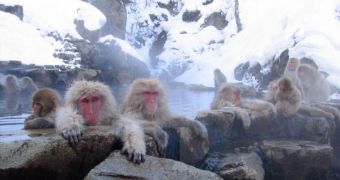Metacognition, a mental process defined in essence as “thoughts about thoughts,” is something that experts have believed for a long time to be uniquely human. However, as it happens, new studies come to argue this established knowledge, and propose that other animals have it as well. University at Buffalo expert J. David Smith says that primates and dolphins are prime examples of species other than our own that display traces of metacognition, LiveScience reports.
“Humans can feel uncertainty. They know when they do not know or remember, and they respond well to uncertainty by deferring response and seeking information. The idea is that some minds have a cognitive executive that can look in on the human's or the animal's thoughts and problem-solving and look at how its [sic] going and see if there are ways to guide it or if behavior needs to pause while more information is obtained,” the expert adds. Details of his ideas appear in the September issue of the scientific journal Trends in Cognitive Sciences.
“Work with primates has shown many parallels with human metacognitive performance. In particular, some of the studies done by Dr. Smith and colleagues have shown close correspondence between the performance of humans and monkeys in nearly identical metacognitive tests,” Emory University in Georgia (EU) Assistant Professor of Psychology Robert Hampton, who has not been part of the new research, says. He is also a research scientist in animal behavior and neuroscience.
Smith also reveals that, while identifying metacognition in humans is fairly easy, on account of us being able to speak, things are a bit more difficult when it comes to animals. In a series of experiments conducted on the dolphin Natua, the creature had to decide if a box on a screen contained thousands of dots or just a few. It could also refuse the task, to avoid a negative penalty. “When uncertain, the dolphin clearly hesitated and wavered between his two possible responses. But when certain, he swam toward his chosen response so fast that his bow wave would soak the researchers' electronic switches. The opposite would be they just react to the world,” the scientist shares.

 14 DAY TRIAL //
14 DAY TRIAL //